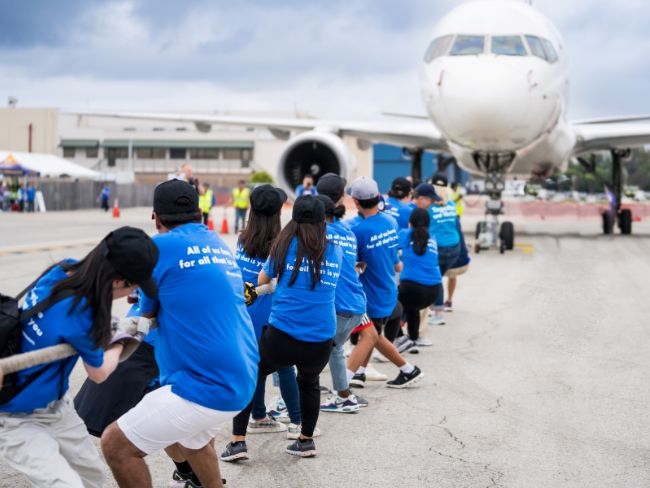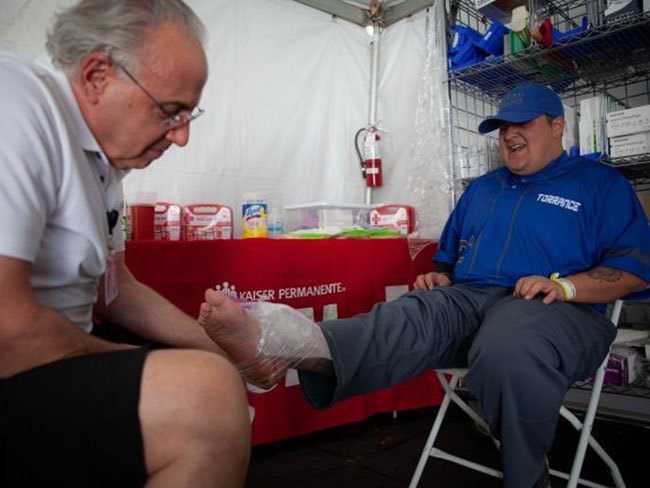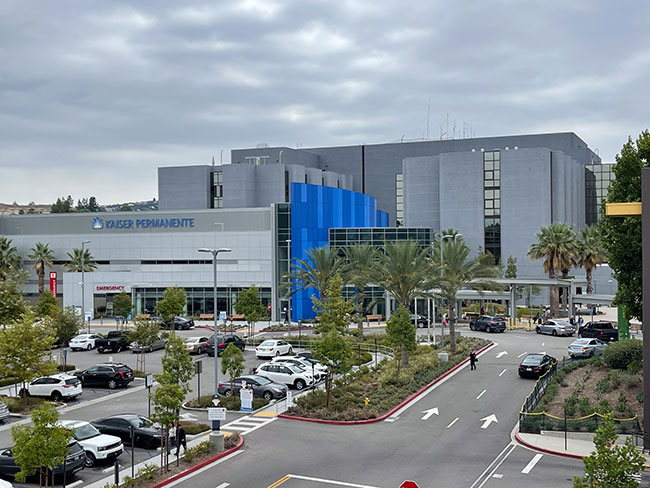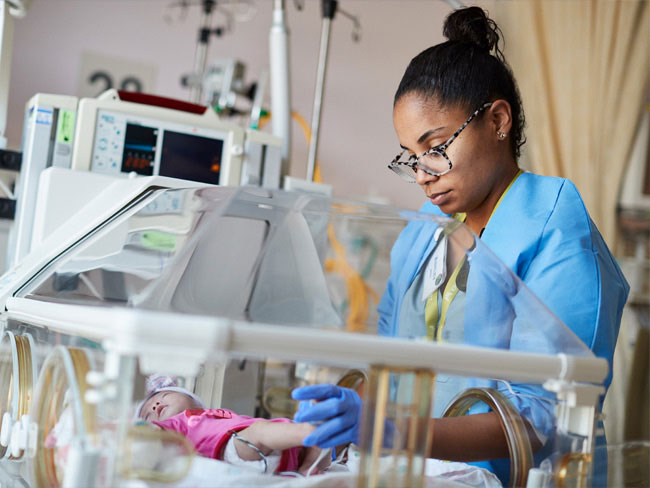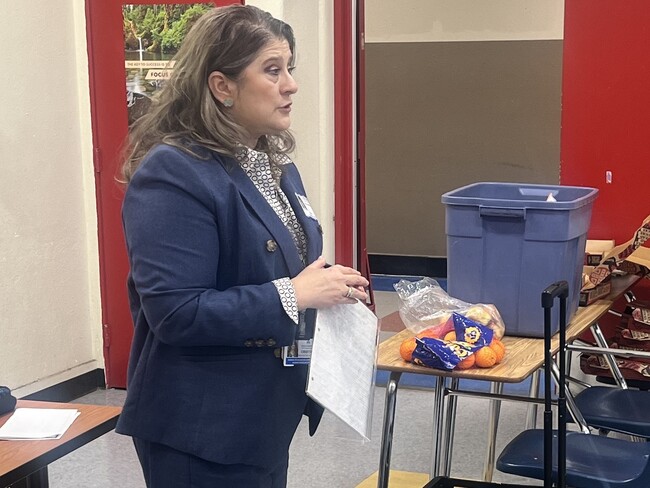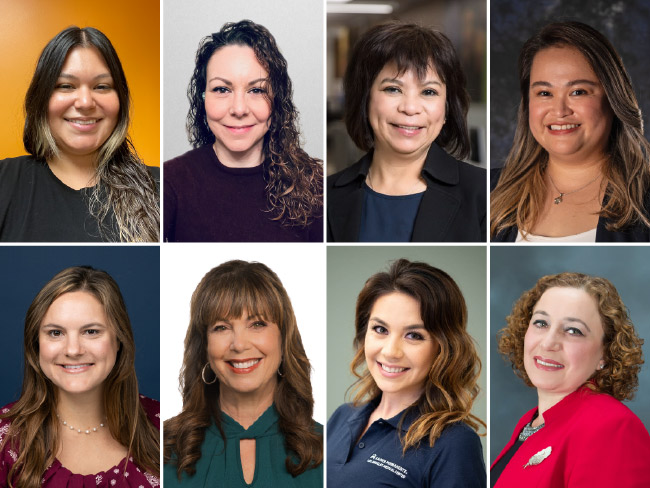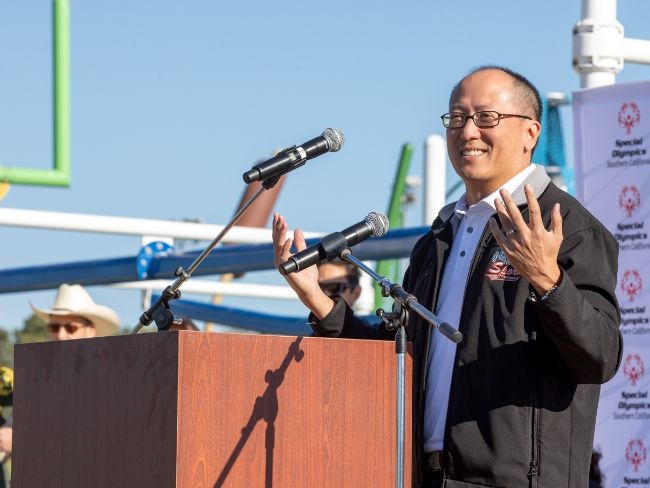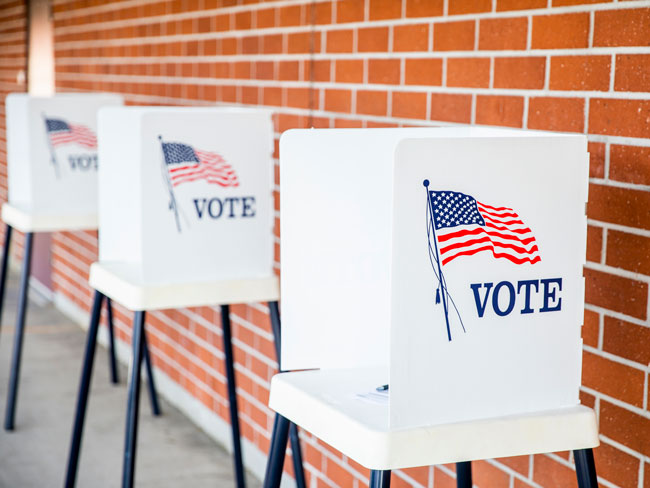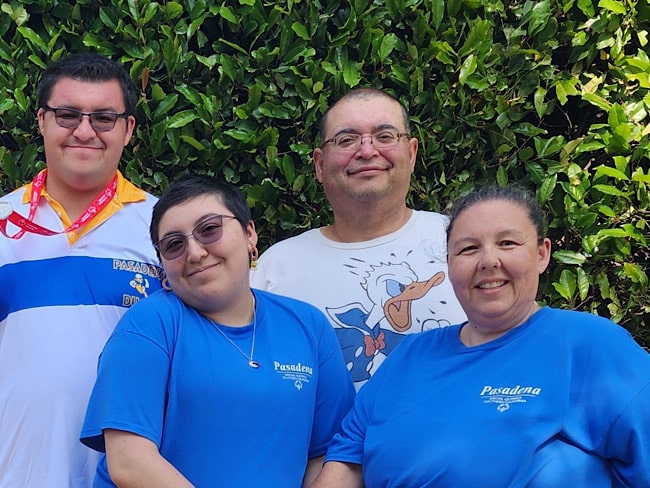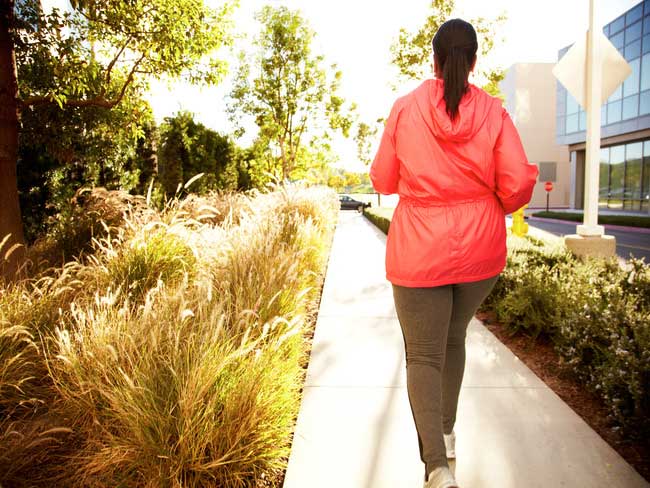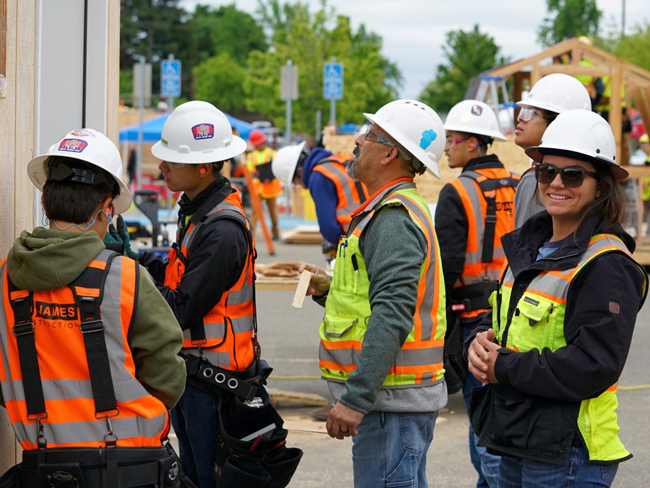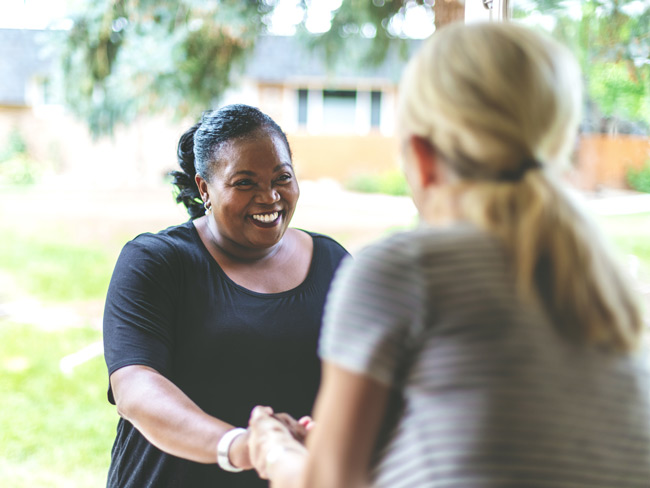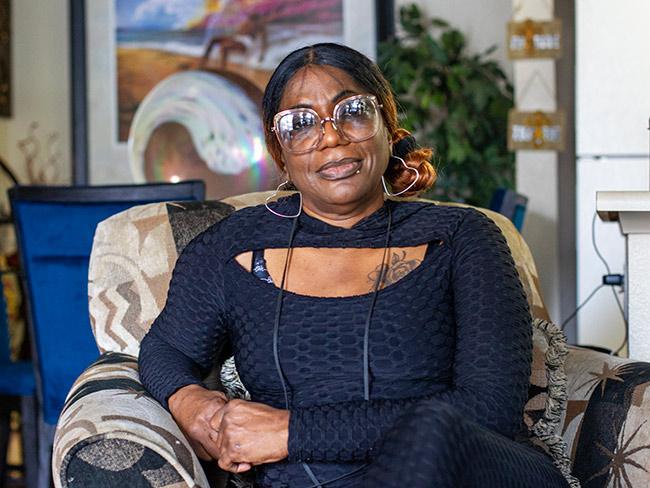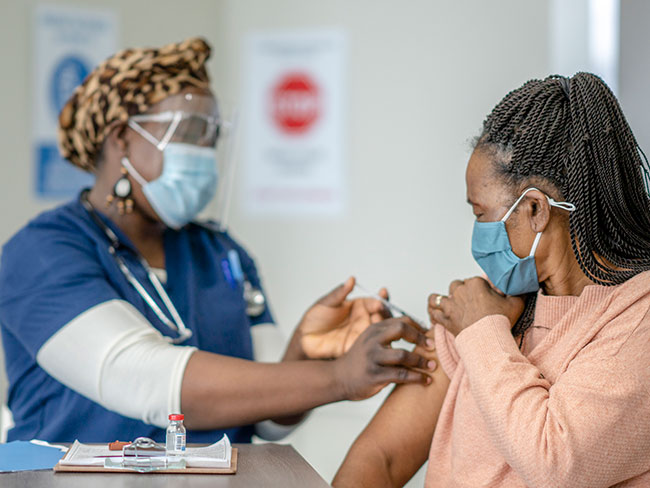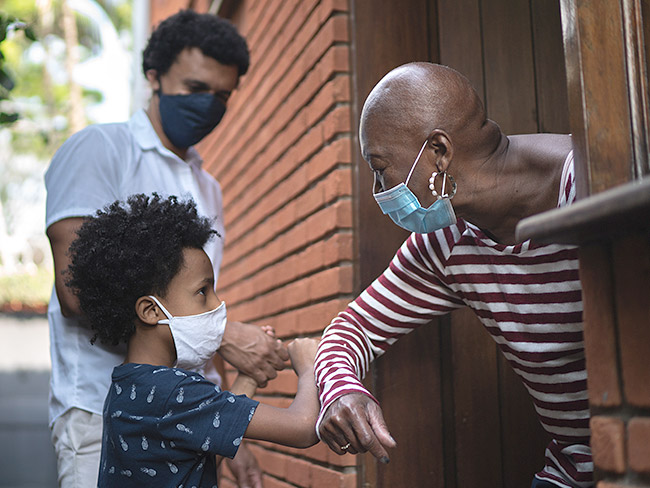Black nurses get together to forge their own future
California African American nurses organize in early 1970s to address health disparities.
Kaiser Black Student Nurses Association, offer foot screening clinic in Oakland, California, 1972. Top row: Gwendolyn Davis, Bonnie Buford (Casher), Kathy Tysinger; Bottom row: Sharmel Dunn (Thompson), Pam Brown (Jenkins), Carolyn Dorsey.
By the late 1960s, African Americans technically had equal rights under the law, yet young Black people were still butting up against slammed doors when it came to professional employment.
Black women who sought education to enter the field of nursing didn’t get the encouragement and support they needed from school advisers, and in many cases, they were turned away from employment simply because they weren’t white.
Kaiser Permanente Black nurses Jessie Cunningham, the first Black nursing supervisor at Oakland Medical Center, and Dorothy Williams, a nurse anesthetist in Oakland, California, for many years, were among the first to rise to the call for a national association to represent the interests of Black nurses.
In 1968, Black women who had achieved some success as nursing professionals decided to take action to help would-be nurses coming up behind them and to break down barriers to good health in Black communities across the nation.
Bay Area Black nurses form group
Led by Betty Smith Williams and Barbara Johnson, the Council of Black Nurses was founded in Los Angeles in 1968. A year later, Black nurses in the San Francisco Bay Area were organized under the leadership of nurses Florence Stroud (who later became the first Black director of public health for the city of Berkeley, California)¹ and Carlessia Hussein, a public health nurse, in San Francisco.
In 1970, the Los Angeles and San Francisco groups of Black nurses combined their efforts to stage the first California statewide conference of Black nurses. The meeting attracted nurses from Miami, New York City, and many other places.
Also in 1970, Black nurses attending the 47th convention of the American Nurses Association in Miami gathered to discuss issues unique to Black association members and to the serious health needs of African Americans.
The caucus produced a steering committee headed by Dr. Lauranne Sams, who was an instructor at the Indiana School of Nursing at the time. (In 1974, Sams became dean and professor of nursing at the Tuskegee University School of Nursing in Tuskegee, Alabama) Sams’ committee’s charge was to develop a method to reach out to Black nurses across the country to compare notes and take coordinated action.
In 1971, a group of 18 Black nurses met in the home of Dr. Mary Harper² of Cleveland, and laid the foundation for the National Black Nurses Association. The association became a non-profit organization incorporated in 1972 in Ohio, and in 2012, members celebrated the association’s 40th anniversary.
Since its inception, the association has included in its goals a focus on eliminating African American health disparities.
The Bay Area Black Nurses Association became a chapter of the National Black Nurses Association soon after its founding. In 1977, nurses in San Jose, California, started the South Bay Black Nurses Association.
Cunningham and Williams were active in the Bay Area association’s community health initiatives for more than 2 decades, and they often represented the local association at the national conferences. Cunningham served twice, as both vice president and treasurer of the Bay Area association.
Kaiser student nurses form group
Six student nurses at Kaiser Foundation School of Nursing in Oakland, California, formed their own Black nurses association in 1972, joining in the enthusiasm for recognition of the professionalism of Black nurses.
Students Gwendolyn Davis, Bonnie Buford (Casher), Kathy Tysinger, Sharmel Dunn (Thompson), Pam Brown (Jenkins), and Carolyn Dorsey were pictured in the 1972 Kaiser Foundation School of Nursing yearbook. The group participated in Black community outreach projects, including a foot clinic in 1972.
The Bay Area Black Nurses Association still meets regularly, alternating locations between San Francisco and Oakland.
The Kaiser Permanente School of Anesthesia (through the California State University, Fullerton) began offering a scholarship for African American students through the National Black Nurses Association in 1996 and since 2001 has continued to do so directly.
This educational scholarship is intended to increase the number of African American students who become certified registered nurse anesthetists.
School of Anesthesia Director John Nagelhout, CRNA, PhD, explains: “We feel strongly that increasing the diversity within our profession will benefit our overall community and strengthen patient care. This also allows many deserving applicants a chance to further their nursing education.”
1 The Bay Area Black Nurses Association and Samuel Merritt University have sponsored a Florence B. Stroud Conference each year since 2011 during February, Black History Month.
2 The career of Mary Harper, Ph.D., included taking care of scientist George Washington Carver late in his life and advising 4 U.S. presidents (Carter, Reagan, G. H. Bush, and Clinton) on health and mental health issues.

